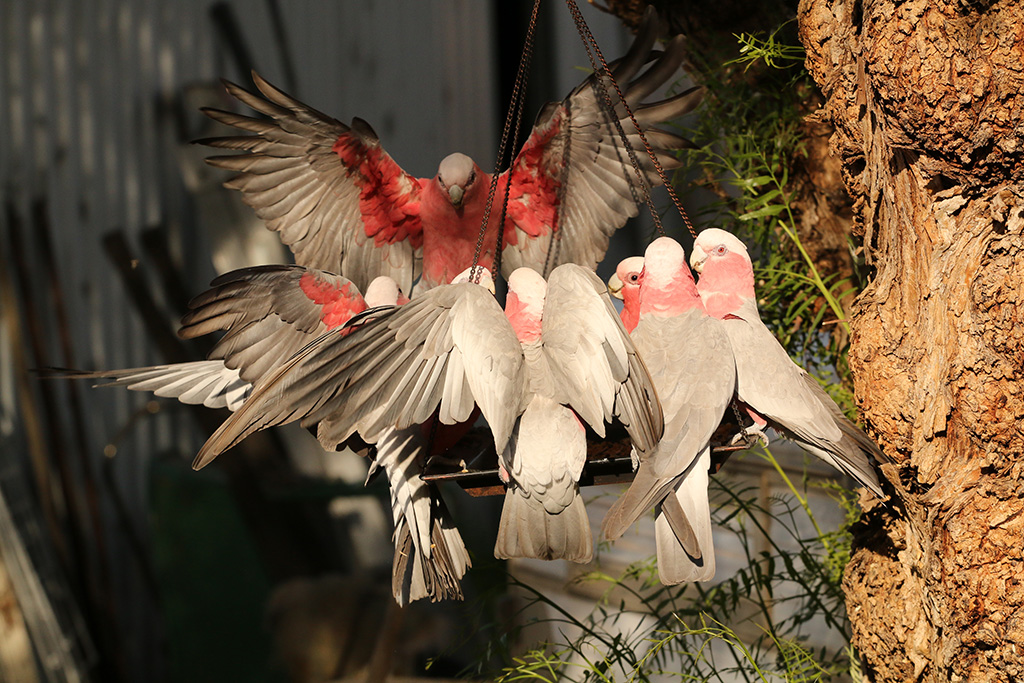I Think That TV Show Stole My Concept!

Writers, and film and television creatives often ask Arts Law about protecting the ideas in scripts, treatments, and pitches, but what does the law say? Copyright law in Australia does not protect ideas, only their material expression in works (literary, artistic, musical or dramatic) or other subject matter (films, sound recordings, broadcasts and published editions), so creators often wonder what they can do if someone copies the concept they have developed.
This issue was explored in the case of Duncan v Australian Broadcasting Corporation [2023], where Annie Duncan alleged that the Australian Broadcasting Corporation (ABC) infringed her copyright in at least one of three works that she had developed, pitched, and broadcast. This case note examines Duncan’s application and the subsequent decision made by the court.
Here are the facts.
‘Buster the Brave Little Wooden Boat’
During a trip to Scotland in 2008, Duncan conceived the idea for a children’s animation series for pre-schoolers called ‘Buster the Brave Little Wooden Boat’, that follows the adventures of a boat named ‘Buster’ and his seagull friend ‘Jack’. In the year that followed, Duncan developed the idea further, and prepared a script proposal including six pages of 2D illustrations, and six pages of text. The series features several characters including boats, seals, a dolphin, a killer whale, and a hermit crab.
In 2009, Duncan submitted the script proposal to ABC in response to a campaign requesting ideas for children’s television shows. When Duncan had not heard anything from the ABC, she began working with a larger team to flesh-out the project and later withdrew her proposal from the ABC. This led to the development of a far more detailed script proposal including 103 pages of storyboards and dialogue, character descriptions, and six draft episodes. This proposal was sent to Screen Australia in 2011, who chose not to take on the project.
In a final effort to bring this idea to life, Duncan worked again with a larger team, this time completing six full episodes of ‘Buster the Brave Little Wooden Boat’. In 2014, these episodes were broadcast on community television in Sydney, Adelaide, Melbourne, and Brisbane. By this point in time, Duncan had created three iterations of her series.
‘Bubble Bath Bay’
In 2015, the ABC broadcast ‘Bubble Bath Bay,’ a 3D-animated children’s show commissioned by ABC. This series follows the adventures of ‘Sydney the Sailboat’ and his pals. It shares a similar setting to Duncan’s works, and Duncan said that some of the characters in ‘Bubble Bath Bay’ play similar roles to the characters in her series ‘Buster the Brave Little Wooden Boat’. Duncan saw some similarities between her work and the series released by ABC.
What was Duncan’s claim?
Duncan commenced proceedings against the ABC, claiming that the ABC infringed copyright in the script proposals submitted to the ABC and Screen Australia, and her ‘Buster’ television series broadcast on Community Television (the ‘Works’). She submitted that the ABC’s ‘Bubble Bath Bay’ bears a substantial resemblance to her Works, and in her written closing submissions alleged a breach of copyright in 11 different areas, namely: original concepts, creative ideas, characters line-up, the setup of environment, characterisation, dialogue, storylines, cinematography, direction of shots, camera movement, and editing sequences. Duncan also alleged that the ABC had access to the Works, asking the Court to draw an inference from what she said was a high degree of similarity between ‘Buster’ and the ABC series ‘Bubble Bath Bay’. Several connections were alleged by Duncan between the characters, as well as similarities between storylines, and even the opening credits.
The ABC denied any infringement and submitted that Duncan’s case was concerned with ideas, concepts, and themes, which are unprotectable under copyright law. It asserted that the commonalities are generic and stereotypical, listing anthropomorphism, the protagonist being a boat, and the harbour setting, as well as generic features, characters, events and themes consistent with a children’s story in a harbour setting. The ABC also submitted that its series was independently created without any reference to Duncan’s Works, and that the ABC did not have access to the second and third iterations of ‘Buster’.
What did the Court decide?
Ultimately, the court found that there was no copyright infringement, and Duncan’s application was dismissed. The ABC was able to prove that their concept was independently developed by another party back in 2002, and it naturally evolved into ‘Bubble Bath Bay’ over time. Duncan was unable to show a causal connection between the development of her work and the series that was broadcast by ABC.
Judge Baird’s discussion of the facts and law sheds light on some important issues for film and television creatives, and on the absence of protection under copyright law for ‘ideas’ more generally.
What is copyright infringement, and can an idea or concept be protected by copyright?
For copyright in a work to be infringed by the making of a reproduction, Judge Baird explained that the copyright owner must show two things. First, they must show that that there is a resemblance, or a sufficient amount of objective similarity between the works. Put another way, the infringing reproduction must be of the whole, or a “substantial part”, of the original work. This involves asking whether the essential features and substance of the copyright work have been taken, and looking at the originality of what has been taken.
Second, the copyright owner must show there has been actual use of the copyright work, or a “causal connection” between the two works. If it cannot be shown that there was actual use of the original work to create the second work, then there will be no infringing reproduction. The copyright owner will sometimes try to prove (as Duncan tried to) that because the two works are so similar, there must have been actual use of the original work. Judge Baird said that drawing that type of inference requires a high degree of similarity.
Judge Baird explained that there is no copyright in ideas or concepts. She referred to a number of previous Court decisions that explained this concept. In Zeccola, a previous Court had found that there was a sufficient argument that the film Great White infringed copyright in the Jaws novel or screenplay. Although the idea of a killer shark terrorizing human beings was not particularly original, the particular combination of situations, events and characters may have enough originality to be protected.
How did the Court apply these principles to Duncan’s claim?
Duncan’s claim failed. Judge Baird found that Duncan failed to establish that the ABC’s ‘Bubble Bath Bay’ reproduced a substantial part of Duncan’s Works.
In her submissions, Duncan set out the connections and similarities she had identified between her Works and ‘Bubble Bath Bay’. These included, for example, that the protagonists in both her work and the ABC series are anthropomorphic boats. She also pointed out that there is a bird character in both works, a father figure that is central to the story, the harbour setting, and a similar opening scene.
Judge Baird concluded that these were simply common themes and ideas. The fact that the two protagonists are boats is not enough, nor is the nautical setting or familiar plot points. The characters in ‘Bubble Bath Bay’ and ‘Buster the Brave Little Wooden Boat’ look different, have different relationships and groupings. The central feature of Duncan’s work is the relationship between ‘Buster’, the boat, and the older seagull ‘Jack’, which is completely absent from the ABC series. While the ABC series includes a bird character, this is a secondary character. ‘Buster’ is a ferry whose best friend is a seagull, while the main character in ‘Bubble Bath Bay’ is ‘Sydney’, a playful young yacht, whose best friend is a water taxi. Other similarities (such as the inclusion of father figures and seal characters) were only similarities of simple concepts and familiar attributes (such as a seal in a harbour setting). The harbour setting and the dangers of the open sea are merely unprotectable ideas, concepts, and themes. Duncan also compared example episodes, including two episodes that feature a lost baby whale. However, the Court found that the essential features and substance of Duncan’s work is not present in the ABC series. The similarities were ‘no more than largely generic ideas and concepts’.
Judge Baird was critical of Duncan’s approach to the comparison between her Works and ‘Bubble Bath Bay’. Her Honour said that this involved ‘searching for and picking out discrete elements, concepts, themes or ideas she considers present in one or other of the Works’ and seeking out correspondence in the ABC series. Instead, they need to be considered in the context of the combination of characters, locations, events and incidents that make up the work.
Duncan’s claim also failed because there was no actual use of her Works. There was no evidence that the ABC accessed or used her Works in the making ‘Bubble Bath Bay’. They key members of the ‘Bubble Bath Bay’ creative development team did not have a copy of, and had never seen, Duncan’s Works. No inference could be drawn from the similarities between the works, and the ABC created ‘Bubble Bath Bay’ entirely independently.
What does this mean for creators?
The most important take-away from this case is confirmation that ideas, themes, and concepts are not protected by copyright. In her submissions, Duncan continually tried to draw connections between characters and plot points, but they were only similar in essence, and the final representation on the screen differed greatly. If ‘Bubble Bath Bay’ was to use an anthropomorphic ferry as its protagonist, with a bird as a best friend, and copied situations, incidents, and story lines, there would be a much a stronger argument for infringement. But the ABC series simply had a boat as its protagonist, and a character that is a bird, neither of which are protected by copyright.
If you are worried that an idea of yours has been stolen, you need to ensure that what is being used is more than the basic idea, theme or concept. If you notice that someone else’s work features relationships, scenes or dialogue that has an actual resemblance to your work, this may be the use of a substantial part, and an infringement of copyright. However, you must also show that there is a causal connection between your work and the work of the alleged infringer.
For more information contact Arts Law for advice, or you can access Arts Law’s Copyright Information Sheet information sheet and Frequently Asked Questions page. Creators may also potentially rely on the law of confidential information to protect an idea, for more information see Arts Law’s Protecting Your Ideas Information Sheet.


